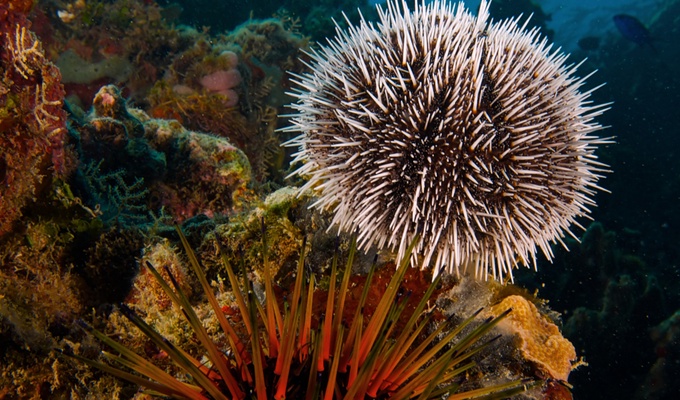Sea urchins are spiny, globular echinoderms in the class Echinoidea. About 950 species of sea urchin live on the seabed of every ocean and inhabit every depth zone from the intertidal seashore down to 5,000 meters . The spherical, hard shells of sea urchins are round and spiny, ranging in diameter from 3 to 10 cm . Sea urchins move slowly, crawling with tube feet, and also propel themselves with their spines. Although algae are the primary diet, sea urchins also eat slow-moving animals. Predators that eat sea urchins include a wide variety of fish, starfish, crabs, marine mammals. Sea urchins are also used as food especially in Japan.
Adult sea urchins have fivefold symmetry, but their pluteus larvae feature bilateral (mirror) symmetry, indicating that the sea urchin belongs to the Bilateria group of animal phyla, which also comprises the chordates and the arthropods, the annelids and the molluscs, and are found in every ocean and in every climate, from the tropics to the polar regions, and inhabit marine benthic (sea bed) habitats, from rocky shores to hadal zone depths. The fossil record of the Echinoids dates from the Ordovician period, some 450 million years ago. The closest echinoderm relatives of the sea urchin are the sea cucumbers (Holothuroidea), both if which are deuterostomes, a clade that includes the chordates.
The animals have been studied since the 19th century as model organisms in developmental biology, as their embryos were easy to observe. That has continued with studies of their genomes because of their unusual fivefold symmetry and relationship to chordates. Species such as the slate pencil urchin are popular in aquariums, where they are useful for controlling algae. Fossil urchins have been used as protective amulets.
